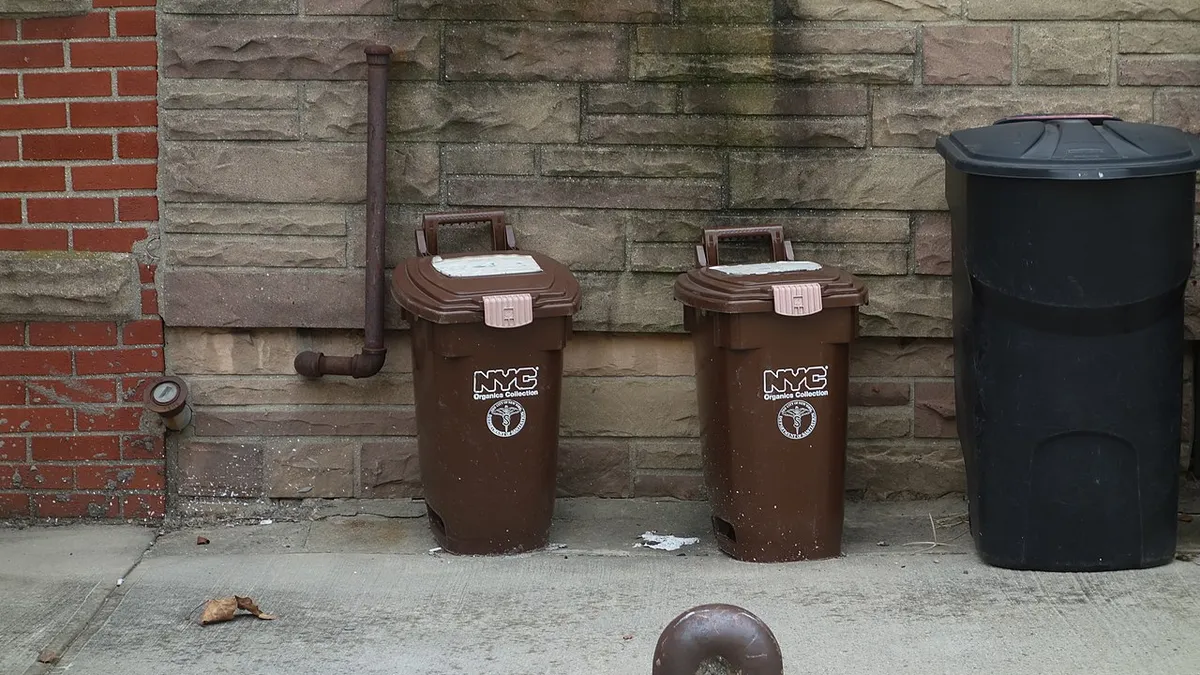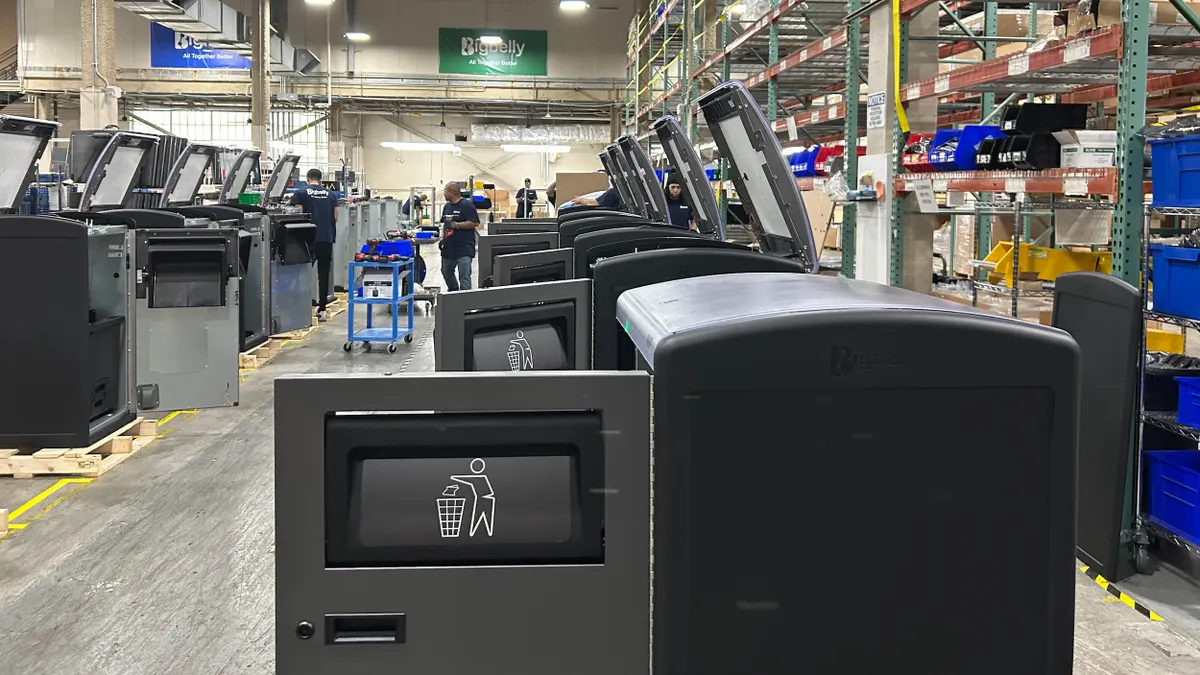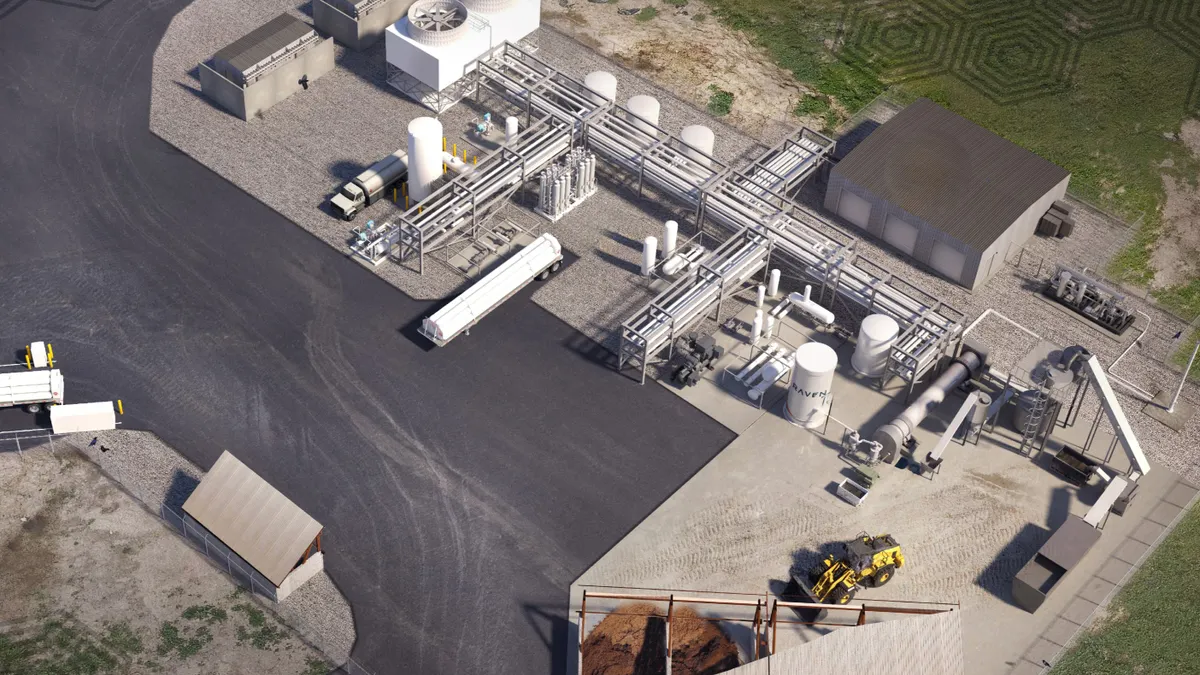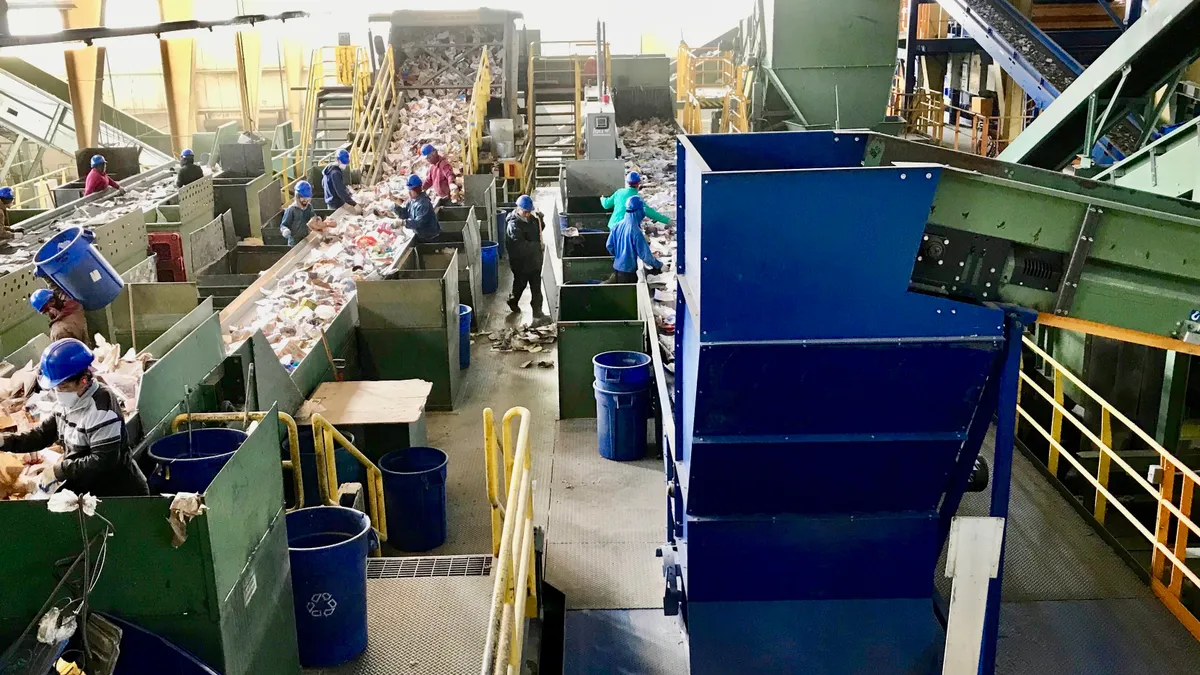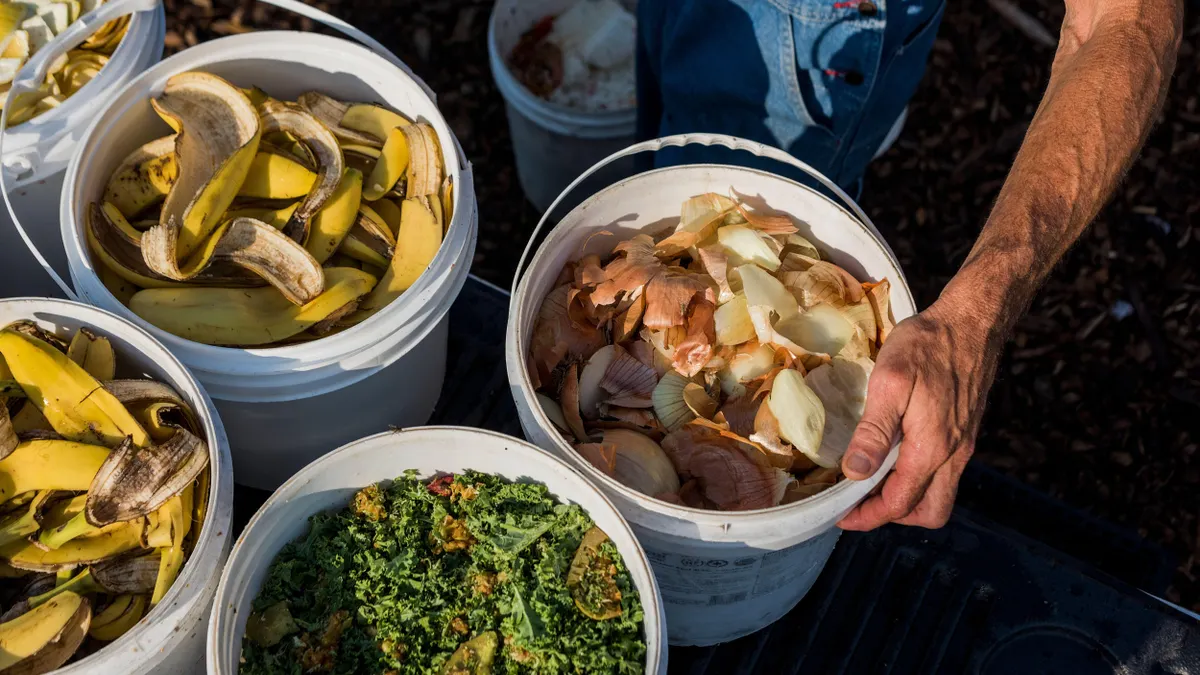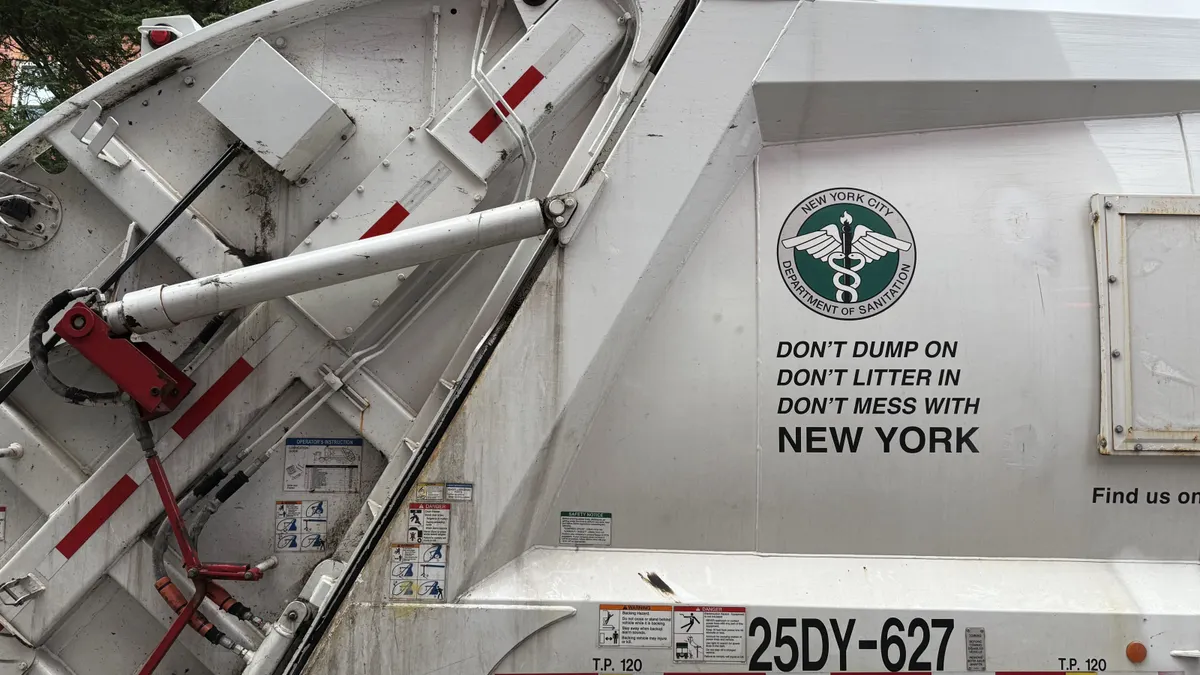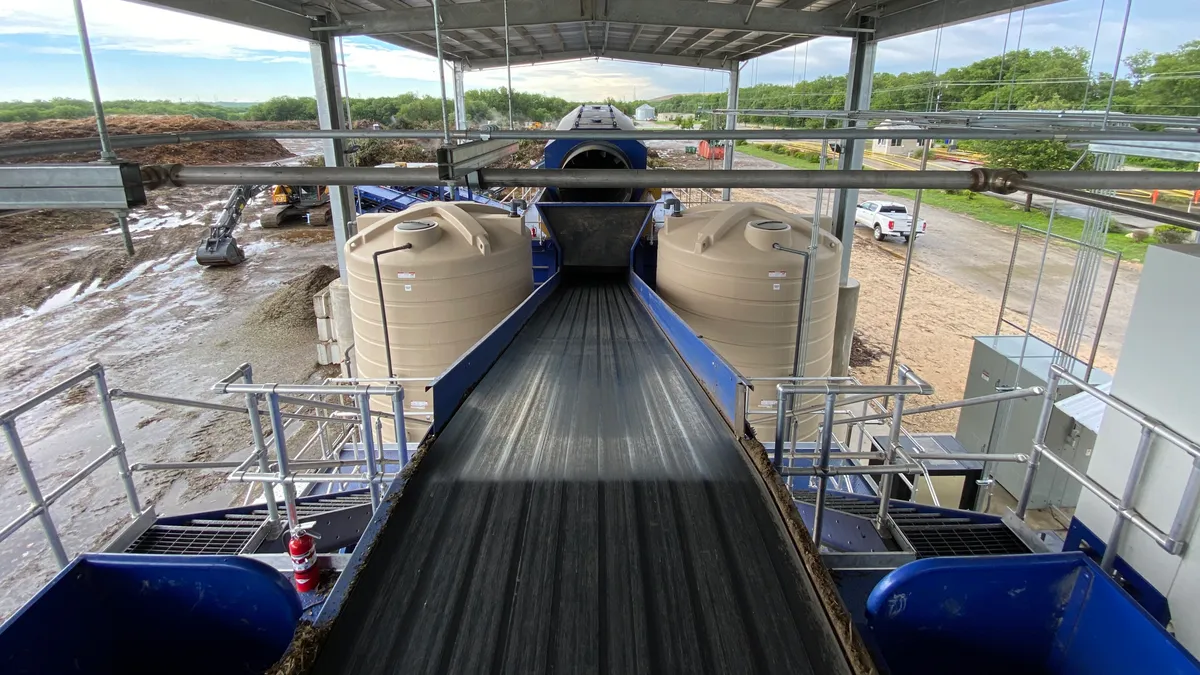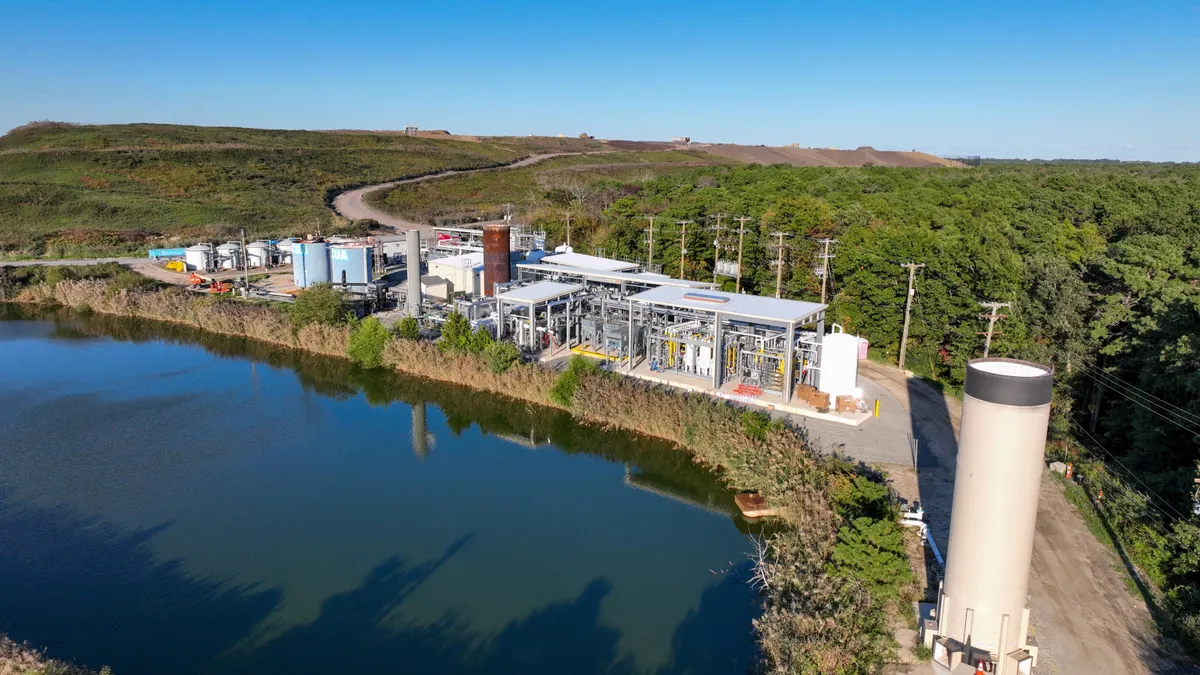Hundreds of thousands of tons of new composting capacity could be added in New York City at sites specified in a report released by the office of Brooklyn Borough President Antonio Reynoso. The findings push back on the New York City Sanitation Department’s position that the city doesn’t have room to handle most of its organics with the technology.
The report comes as New York begins deliberations over its latest solid waste management plan, which will play a major role in shaping sanitation policy over the next 10 years. DSNY released a draft of the city’s next plan in October. Reynoso hopes his office’s report will sway officials to take composting more seriously as a solution for the city’s growing source-separated organic waste stream.
“We take it for granted that it’s something we should be doing,” Reynoso told Waste Dive. “We could be saving a ton of money, we could be more sustainable and resilient with what we’re doing and we’re not.”
The report was authored by Ezra Kanarick, an intern in the borough president's office, as well as officials from the Brooklyn and Manhattan solid waste advisory boards. It pitches the benefits of composting over co-digestion of organics, expanding on an earlier draft of the report that was released at an event last year.
It was initiated to support Intro 696 in the New York City Council. The legislation, which has two dozen sponsors, would require DSNY to ensure 180,000 tons of permitted compost capacity is available in each of the city's five boroughs.
DSNY continues to oppose the proposal for increased capacity laid out by Intro 696 and Reynoso’s report. In city council testimony last year, the agency argued that Intro 696’s goals would necessitate the creation of hundreds of facilities the size of current community composting facilities and questioned the timeline, which would have required the agency to identify appropriate capacity in Queens and Staten Island by 2026.
"We share the same goals around waste equity and beneficial use, but cannot support this bill due to the cost, timeline, and the constraints of the physical environment of the five boroughs."
Despite earning some momentum last year, the legislation hasn't seen action since last summer. But Reynoso said he's not giving up on its aims, and he believes that composting still needs to be championed as a local solution for the city's massive amount of waste and its climate goals. He hopes the city will add Intro 696’s goals to the solid waste management plan, which is currently open for public comment.
"This could be an alternative or parallel path," Reynoso said.
New York City’s changing waste system
New York City generated between 2.2 million and 2.4 million tons of organic waste in 2023, the majority of which came from residential streams, according to an attachment to the city's draft solid waste management plan. That represents about a third of the city's total waste.
The plan identified nearly 400,000 tons of existing organics processing capacity, including public facilities and those contracted with vendors. That total includes both compost and anaerobic digestion facilities.
In 2023, an estimated 800,000 tons of organic material mixed into New York City’s trash went to landfill, a total the city is eager to reduce. DSNY is planning a series of initiatives to grow its role in recycling organic materials in the city.
Last year, the agency rolled out its citywide curbside organics collection program to help recycle more of the material. Through the first half of 2025, the city's organics capture rate was about 10.5%, up from about 6% prior to the rollout. DSNY projects that its residential capture rate will increase over time.
Simultaneously, the city agency is launching its citywide commercial waste zone system through a staggered approach. The system — which allows three haulers per zone — launched in The Bronx this month, following the January implementation of the initial zone in Queens. Under the system rules, haulers are required to offer discounted organics collection services to businesses to incentivize diversion, although there has been limited participation in that offer in the zones that launched.
Identifying improvements to the organics system
Nevertheless, composting advocates believe mandates and strict enforcement could ensure stronger participation in organics diversion efforts. With that would come the need for increased capacity.
DSNY’s draft solid waste management plan includes strategies to increase the use of city-produced compost at public housing complexes and support the creation of a compost facility in the Brooklyn neighborhood of Gowanus. But it also includes a plan for increased codigestion of food waste at a city-owned wastewater treatment plant, which Reynoso and other community composters oppose due to environmental justice concerns.
His office’s report said that it would be better to manage the bulk of the city’s organics “through a local and resilient composting network, rather than the capital-intensive investment associated with anaerobic
co-digestion.”
Reynoso acknowledged that the capacity proposed in the report isn't necessary yet. The solid waste management plan likewise noted that additional processing capacity isn’t necessary yet, but may be needed to manage more recovered organic material in the future.
"We don’t need the 180,000-ton capacity right now obviously, but if we were going to meet these goals, then yes that’s where we would be. I have to be committed to that," he said.
Correction: This story has been updated to clarify that DSNY’s next solid waste management plan is for a 10-year timeframe.


